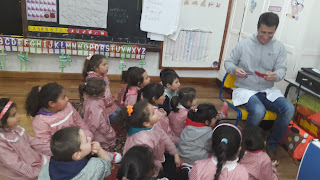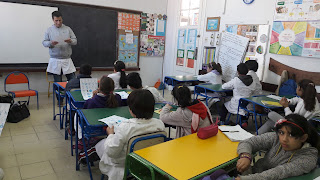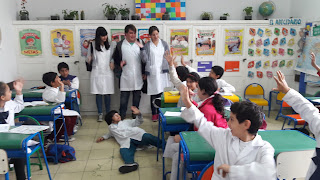Search This Blog
Saturday, August 26, 2017
Tuesday, August 22, 2017
Sunday, August 20, 2017
Tropical rainforests

rainforests cartoons
http://www.seppo.net/cartoons/displayimage.php?album=20&pid=1237
http://www.3dgeography.co.uk/rainforests
WHY ARE RAINFORESTS IMPORTANT?
Flying over the heart of the Amazon is like flying over an ocean of green: an expanse of trees broken only by rivers.Even more amazing than their size is the role the Amazon and other rainforests around the world play in our everyday lives.
While rainforests may seem like a distant concern, these ecosystems are critically important for our well-being.
Rainforests are often called the lungs of the planet for their role in absorbing carbon dioxide, a greenhouse gas, and producing oxygen, upon which all animals depend for survival.
Rainforests also stabilize climate, house incredible amounts of plants and wildlife, and produce nourishing rainfall all around the planet.
Rainforests:
- help stabilize the world’s climate;
- provide a home to many plants and animals;
- maintain the water cycle
- protect against flood, drought, and erosion;
- are a source for medicines and foods;
- support tribal people; and
- are an interesting place to visit
The Tropical Rainforest
Rainforest
Tropical rainforests are among the most mysterious of all
geographical biomes in the world.
A biome is an area with very
distinctive plants and animals that have adapted to life in that
particular environment.
Rainforests have covered large portions of the Earth for
millions of years, and can have trees that are 1,000 years-old or
more.
They are called rainforests because they are among the
wettest areas on Earth, receiving anywhere from 80 to 100 inches of rain a year.
In most rainforests, the
temperature ranges from 70 to 85 degrees Fahrenheit all year long, and the air is almost always humid.
Rainforests have four very distinct layers of trees.
The first is the emergent layer which has giant
trees growing from 100 to 240 feet tall. These trees have umbrella-shaped crowns that grow high above
the rest of the forest. They have their own distinct plant and animal life.
The next layer is called the canopy. These trees grow up to 130 feet tall, and they form a tight
canopy, or covering, over the rest of the forest which allows very little sunlight to come down. The
branches and trunks of these trees are covered with smaller plants and appear to be tied together with
hundreds of vines. About 90% of all rainforest animals live way up high in the canopy.
The third layer is the understory, and it's very shady. Only
about 15% of the sunlight from the canopy falls, and it tends be
very warm and humid. Trees and leafy plants that require little
sun grow here, with the trees growing to about 60 ft. This layer
has many smaller trees, shrubs, vines, and plants, but little air
movement. There are many animals and insects living in this
layer.
The final layer of the rainforest is the forest floor. It is
surprisingly dark and less than 2% of the sun's light reaches this
area. Because the sun's rays don't shine on the ground, there is
very little plant life on the forest floor. It is an area covered with
fallen leaves, seeds, dead flowers, and fruits and branches that
decompose very quickly. It also has a distinctive variety of
animals and plants that live here.
Rainforest Facts
• Rainforests produce about 40%
of the world’s oxygen.
• About 25% of all medicines
come from rainforest plants.
• 1,400 plants in the rainforest
are believed to offer cures for
cancer.
www.superteacherworksheets.com
Friday, August 18, 2017
Reading Project.
READING PROJECT
Teachers: Alice Baratta, Ma Celia Da Rosa, Alejandra Da Cruz y Aldo Parodi
The main objectives in this Reading Project are based on the following goals.
- Reading for meaning. The importance of acquiring reading comprehension techniques.
- Reading for understanding
- Reading for developing and reinforcing other skills (grammar, vocabulary, pronunciation, and writing). In the same way that oral dialogues, short compositions, and listening activities do, reading can put into practice grammatical structures, new lexical items, and elements of pronunciation. Reading can also offer good writing models.
Teaching Objectives
1. To practice scanning, previewing, predicting, and skimming.
2. To extract main ideas from paragraphs, and paraphrase them in a short summary.
3. To express their personal reactions to the readings, and support their reactions with reasons.
4. To identify and learn new vocabulary words in each reading.
1. To practice scanning, previewing, predicting, and skimming.
2. To extract main ideas from paragraphs, and paraphrase them in a short summary.
3. To express their personal reactions to the readings, and support their reactions with reasons.
4. To identify and learn new vocabulary words in each reading.
Learning Objectives
Upon completion of the project, students will be able to:
Upon completion of the project, students will be able to:
1. To use a XO Laptop to look for further information about the reading as well as informative articles within predetermined sites.
2. To demonstrate scanning, skimming, previewing, predicting, and skimming techniques.
3. To distinguish between main ideas and supporting details.
4. To use reflection as a means of evaluating the usefulness of sources.
3. To distinguish between main ideas and supporting details.
4. To use reflection as a means of evaluating the usefulness of sources.
Subsidiary Objective
- To provide innovative pedagogical methods, best practise guidelines, and strategies towards systematic use of ICT for reading promotion
Reading Techniques to foster reading comprehension
- Skimming - reading rapidly for the main points
- Scanning - reading rapidly to find a specific piece of information
- Extensive Reading - reading a longer text, often for pleasure with emphasis on overall meaning
- Intensive reading - reading a short text for detailed information
- WH – Questions for reading comprehension activities
- Bottom – up and Top – Down reading
- Cause and effect
- Draw conclusions
- Figurative Language. e.g. I'm so hungry I could eat a horse, I’ve told you a million times to clean your room!
- Main idea
- Inferring from context, titles, etc…
- Points of view,...etc
Wednesday, August 16, 2017
THE VERY HUNGRY CATERPILLAR
Objective
Sequencing refers to the ability to understand and talk about a story as an ordered series of events. This lesson is designed to introduce this skill to primary students using the book The Very Hungry Caterpillar by Eric Carle. In this lesson, students discuss events at the beginning, middle, and end of the story, and then sequence the events. This lesson is the first in a set of sequencing lessons designed for primary grades.For students to be able to successfully sequence events in a text, they should have some understanding of time sequence within a larger context of the beginning, middle, and end of a story. They should be able to determine the order of events in a story and thereby understand the author's purpose.
Materials
- The Very Hungry Caterpillar, by Eric Carle
- A chalkboard, white board, or chart paper to record information from the text
-
- Blank paper, pencils, and crayons or markers.
Procedure
- Hook/Engagement
Tell students that they will learn about the beginning, middle, and end of a story. Have them identify the beginning, middle, and end of common things, such as:
- A school day
- How a caterpillar becomes a butterfly
- Sounds in words such as: cat
- A field trip
- Songs during a favorite cartoon episode, such as Sponge Bob Squarepants
- A baseball game
- A week
Another version of a table could look like this:Word or Phrase Where in the Story Once upon a time... beginning The End They lived happily ever after. The next day... After several months... Finally...
Beginning Middle End Once upon a time... The next day... They lived happily ever after. Henry was born... After several months... In the end... - Vocabulary
- Caterpillar-the larva of a butterfly or moth
- Measurable Objectives
Explain to students that they will be discussing what happens at the beginning, middle, and end of the story. At the end of the lesson, you will ask them to tell what happens at the beginning, middle, and end of the story so that you will know whether they have learned what you want to teach them.
- Focused Instruction
Introduce the book by asking students to consider the title. Ask, "What do you think a very hungry caterpillar eats?" and allow students an opportunity to share their ideas. Begin reading the book to your class. As you read, pause to identify the parts of the text. For instance, before reading the first page say, "Let's see what happens at the beginning of the book." When you get to the part where the caterpillar begins to eat you might say, "Here comes the middle of the story." Finally, as the caterpillar builds his cocoon you might wonder aloud, "I think this is the ending of the book." After you have read the book, draw a three-column chart on the board or chart paper, with the column labels, "Beginning," "Middle," and "End." Since you are modeling this for students, think aloud and go back through the book to do a picture walk while you say something such as,
"What happened at the beginning of The Very Hungry Caterpillar? Well, in the beginning, there was an egg. The caterpillar was born in the beginning of the story. Let's see. I'll look back at the book to find out what else happened at the beginning of the story. At the beginning of the story, it was Sunday."
Record these ideas in the "Beginning" column of your chart.
- There was an egg.
- The caterpillar was born.
- It was Sunday.
- Guided Practice
Complete the next part of the chart with students, asking the question, "What happened in the middle of the story? What happened at the end of the story?" If a student offers an idea that fits better in another section of the chart, you might reply with a comment such as, "Oh, I remember that part, too. Let's find that illustration in the story. Here it is, near the end of the book. I think it would be great to add that to the 'end' section of our chart." By the end of the discussion, your chart should include some of the following ideas:
Be sure to review the sequence of the days of the week and review which days are at the beginning, middle, and end of the week, understanding this is somewhat arbitrary.Beginning Middle End The caterpillar was born and was hungry. Each day the caterpillar ate a little more than the day before. The caterpillar changed into a butterfly.
- Independent Practice
For independent practice, have students identify events in the beginning, middle, and end of the story, writing a sentence and drawing a picture for each section. An extension activity is to create a collaborative book, The Very Hungry Animal. Students can choose another animal to write about, and decide what the animal eats each day of the week, and explain what might happen when the animal is full. The class can be separated into three groups to form "Beginning," "Middle," and "End" groups. Be specific about where the groups will start and stop their portions of the story. For instance, the "Beginning" group could start the story with the raccoon being born or appearing at the edge of the forest. The "Middle" group could write about what the raccoon ate on each day of one week. The "End" group could write about the raccoon falling asleep and then waking up larger than it was a week before.
- Assessment
One way to assess student understanding of the sequence of a story is to choose a different, familiar book and ask students to identify the beginning, middle, and end of that story. You can strengthen students' understanding of these ideas by focusing on the beginning, middle, and end of a familiar event, such as the school day, and ask students to describe it using these terms.
Reflection and Planning
Use examples from the school day to help students understand sequencing. As you go through the school day, stop to have students draw what they are doing at that time of the day. Note the time of day and have them write a few words about what they are doing below their illustrations. Do this twice each day at different times over three days. At the end of the three days, have students sequence their illustrations to create a book of their day, progressing through events from the beginning to the end of the school day.To continue working on sequencing, you may use the two additional lessons on this topic. Each lesson explores the topic in a bit more depth, expanding students' understanding of the concept. You may also choose to reinforce the ideas in this lesson with another book by Eric Carle, Rooster's Off to See the World.If students are struggling with the skill of sequencing, review the skills taught in the previous lesson, using different texts during small group instruction.
For more practice with sequencing, try the next lessons in the series, Sequencing: Lyle, Lyle, Crocodile and Sequencing: The Hare and the Tortoise
Common Core Alignments
- 3With prompting and support, identify characters, settings, and major events in a story.
- 7With prompting and support, describe the relationship between illustrations and the story in which they appear (e.g., what moment in a story an illustration depicts).
- CCSS.ELA-LITERACY.RL.1.3Describe characters, settings, and major events in a story, using key details.
- CCSS.ELA-LITERACY.RL.1.7Use illustrations and details in a story to describe its characters, setting, or events.
- Describe the overall structure of a story, including describing how the beginning introduces the story and the ending concludes the action.
- Use information gained from the illustrations and words in a print or digital
-
ook Summary
A small caterpillar emerges from an egg and begins eating everything in sight. Finally, it is no longer hungry and no longer small. The big, fat caterpillar builds a cocoon around himself and finally emerges as a beautiful butterfly. In fact, what Carle calls the cocoon is really the pupa or chrysalis. The Very Hungry Caterpillar is unique in that it actually has the holes eaten by the caterpillar. Like most of Carle's books, it is illustrated with tissue-paper collages resplendent with color and detail.
Introducing the Book
Here are a few strategies for introducing the book to the class.
Cover Story
Display the book and invite children to describe the caterpillar. Ask Students: Does he look happy? How do you think the artist made this caterpillar? Read aloud the title and ask: Why do you think the caterpillar is so hungry?
Page Flip
Invite children to flip through the pages of The Very Hungry Caterpillar. Ask Students: What do you notice that's different about this book? Talk about the holes in the pages and the different sized pages. Tell the class that the author made the book this way on purpose. Ask children to think about why as they read the story.
Building Background
Ask children what they know about caterpillars. Have they ever seen one? Held one? How did it feel? What happens to caterpillars? Begin a K-W-L (What We Know, What We Want to Know, What We Learn) Chart on poster paper. List children's knowledge in the first column and their questions in the second. After reading the story, revisit the chart to add information to the third column. You might also wish to have some nonfiction books on caterpillars and butterflies on hand to augment children's knowledge.
Try using these ideas after you have read the book at least once with the class.
Reading the Book
Basic Concepts
- Counting: Invite children to count out the food that the hungry caterpillar eats each weekday. Ask Students: How many things does he eat on Saturday? How many more things is that than he ate on Friday?
- Days of the Week: Write the days of the week on the chalkboard and have children tell what the caterpillar does on each day. Ask volunteers to identify each day of the week on a calendar.
- Back and Front: Point out that the short pages of the book show both the front of the fruit on one side and the back of the fruit on the other. Ask children to point out other examples of back and front in the classroom (books, classmates, chairs).
Changes
- Review the changes that the caterpillar undergoes. Then ask if children can think of other things that change. Ask Students: Do pets change? How? Do trees change? Have you changed?
- Help children recognize that all living things grow and change.
After Reading the Book
Make Caterpillar and Butterfly Crafts
Children can have fun retelling the story with their own caterpillars and butterflies.To Make Caterpillars: use discarded egg cartons, pipe cleaners, paints or markers.
- Cut apart a carton to make a six-hump caterpillar.
- Paint the carton including a face on one end.
- Poke two holes for antennae and insert pipe cleaners.
- Fold the filter in half, then open it again.
- Drip paint on the center fold. Let it spread and dry.
- Pinch the filter in the center, then wrap a pipe cleaner around it to be the butterfly's body.
Monday, August 7, 2017
Subscribe to:
Posts (Atom)





































